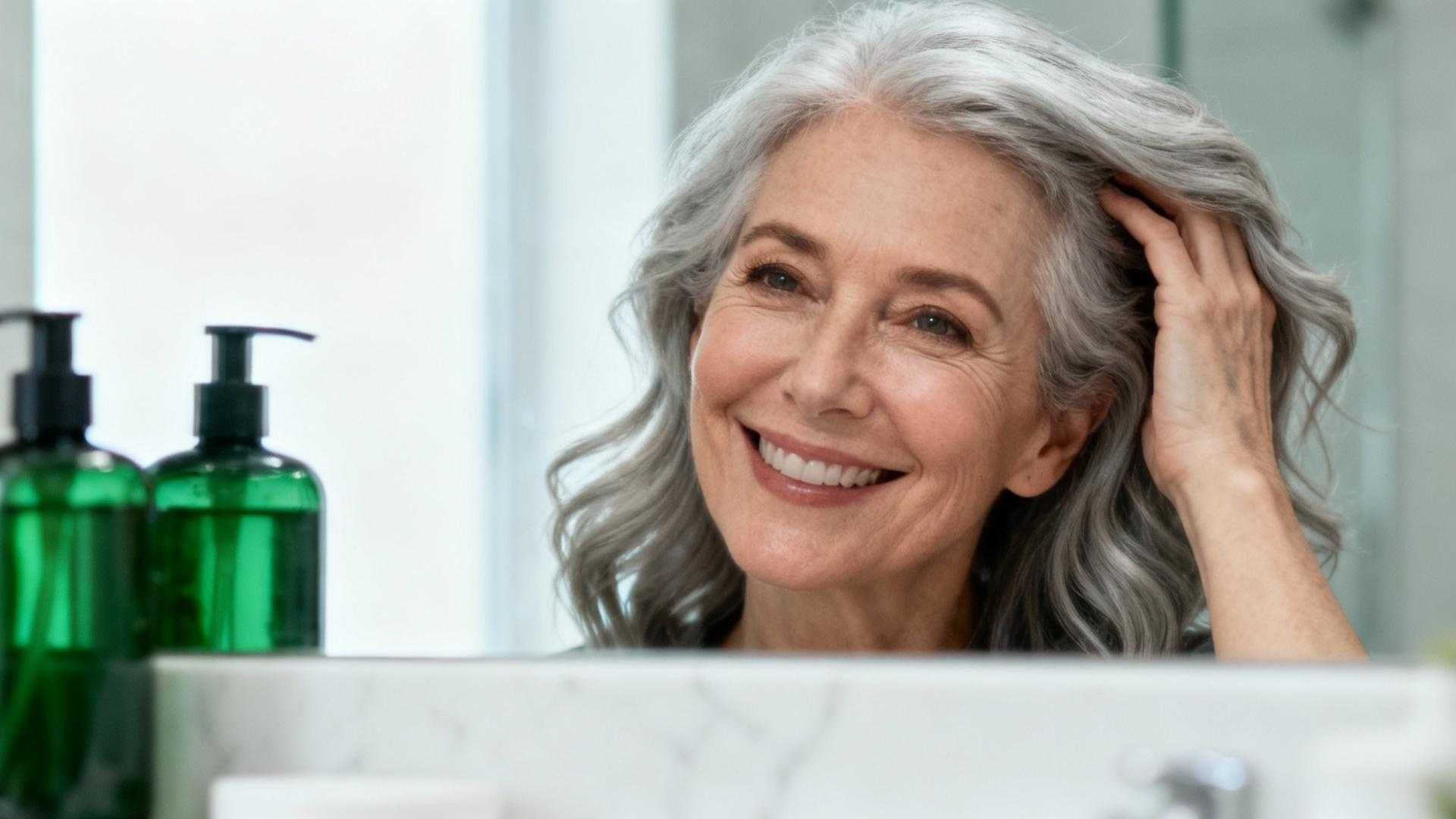After three decades of reaching for the dye bottle every few weeks, Maria Rodriguez made a decision that changed everything. At 58, she decided to stop covering her gray hair and embrace what nature intended. What happened next surprised her—and it might surprise you too.
The journey to natural gray isn’t just about letting roots grow out. It’s about redefining beauty standards and discovering a confidence that comes from authenticity. In 2025, more women are choosing this path, supported by innovative products and styling techniques that make the transition seamless and stylish.
Why women are choosing to go gray now
The cultural shift is unmistakable. Gray hair has evolved from something to hide into a fashion statement that radiates confidence and sophistication. Celebrity influencers and everyday women alike are showcasing their silver strands on social media, proving that gray can be absolutely gorgeous.
Dr. Leah Carter, a dermatologist specializing in scalp health, notes: “Women who’ve colored for decades often seek this change for health reasons. Reducing chemical exposure can significantly improve scalp integrity and overall hair condition.” The wellness movement has made natural aging not just acceptable, but celebrated.
The blending approach that changes everything
Forget the awkward grow-out phase you’re imagining. Modern techniques like ash blonde balayage and metallic highlights create a gradual, sophisticated transition. Professional colorists now specialize in blending gray with your existing color, making the process virtually invisible to others.
These techniques work like a bridge between two worlds—honoring where you’ve been while embracing where you’re going. The result? A polished, intentional look rather than an accidental transformation.
Products that make gray hair shine
Gray hair has different needs than pigmented hair. It can be coarser, drier, and prone to yellowing. That’s where specialized products become game-changers for your new silver locks.
- Purple shampoos and toners: L’Oréal Paris Cool Silver treatment neutralizes brassy tones for about $18, keeping your gray looking fresh and vibrant.
- Deep conditioning treatments: Gray hair needs extra moisture—weekly masks with ceramides restore softness and shine.
- Sulfate-free cleansers: Gentle formulas like Aveda Blonde Revival preserve your hair’s natural oils while maintaining color clarity.
- UV protection products: Gray hair is more vulnerable to sun damage, making protective serums essential for outdoor activities.
The unexpected confidence boost
Something remarkable happens when you stop fighting your natural hair color. Jennifer Walsh, a marketing executive from Boston, describes her experience: “I thought going gray would make me feel older. Instead, I feel liberated. I’m no longer chasing an impossible standard.”
Similar to finding the perfect haircut after 60, embracing gray hair can transform how you see yourself and how others perceive your confidence.
“Gray hair as a fashion statement reflects broader societal shifts in aging and identity expression. We’re witnessing a cultural revolution in beauty standards.” — Dr. Mark Liu, Cultural Sociologist
Styling tips that make gray look gorgeous
Your haircut matters more than ever once you go gray. Shorter styles with movement—like textured bobs or layered pixies—show off the dimensional beauty of silver hair. These cuts also minimize the appearance of any remaining transition areas.
For those keeping length, consider face-framing highlights in cooler tones. These brighten your complexion and add youthful dimension to your overall look.
What about workplace reactions?
This concern stops many women from taking the leap. The truth? Perceptions are changing rapidly. Raven Tyler, a celebrity colorist, observes: “Gray coverage is no longer just about hiding—it’s about embracing age with a chic, polished look that flatters your natural skin tone.”
Just as choosing the right nail colors can enhance your appearance, well-maintained gray hair signals sophistication and self-assurance in professional settings.
The maintenance reality
Here’s the surprising part: gray hair often requires less maintenance than constant coloring. No more racing to cover roots every three weeks or dealing with color damage. Instead, you’ll focus on keeping your silver vibrant and healthy.
- Toning treatments: Every 4-6 weeks to maintain cool tones and prevent yellowing.
- Regular trims: Keep ends healthy and style fresh—crucial for showcasing gray’s natural texture.
- Moisture-rich styling: Use leave-in conditioners and hair oils to combat dryness.
Is this the right choice for you?
Going gray after 30 years of coloring is deeply personal. Consider your lifestyle, professional environment, and most importantly, how you feel about the change. Some women transition gradually over months, while others make the leap quickly. There’s no wrong approach—only what feels right for you and your journey toward authentic self-expression.
